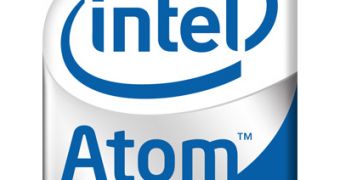While Intel has not even officially introduced the Sandy Bridge platform just yet (we're still roughly one month away from that moment), it seems that information regarding the company's next-gen Atom iteration, code-named Cedar Trail, has already started to leak out, but, as far as we're concerned, these bits and pieces don't really paint a very good picture of what we should expect from these low-power CPUs. In fact, according to a couple of reports by Fudzilla, it would seem that the Cedar Trail Atom CPUs, set to start mass production on Q4, 2011, will provide a couple of improvements over the current-generation Atoms, but still lack some of the features many people expect them to deliver.
Now, the fact that the next-generation Atom CPUs won't support DirectX 11 is not exactly a big surprise, and, to be perfectly honest, we'd be more than happy if they at least delivered a very good DirectX 10.1 experience, which is not always the case nowadays.
Apparently, the Cedar Trail Atoms, or at least the desktop-bound ones, will in fact pack a DirectX 10.1 core, enabling them to deliver some very decent experiences, including Full HD decoding, including hardware acceleration for MPEG2, VC1, ACV and H.264, as well as support for Blu-ray 2.0, thus bringing picture-in-picture and online functionality to Blu-ray discs, but also requiring two secondary decoders, 1GB of local storage for updates and content, and an Internet connection.
On the other hand, the fact that Cedar Trail will apparently still rely on the NM10 chipset, thus not being able to provide native USB 3.0 support, is a major minus, as far as we're concerned, given the fact that, after all, SuperSpeed USB solutions have become a lot more popular and widespread over the past couple of years.
Plus, Intel also promises that the future Atom CPUs' TDP will be very small, thus making them quite well-suited for tablet use as well, thus taking a whole lot more seriously on the competing solutions from AMD and NVIDIA.
Of course, we're still pretty far away from late 2011 (or early 2012, when the first finite products built on these chips will probably make their way onto the market), so it remains to be seen whether the Intel Cedar Trail Atoms will be able to compete against the Tegra 2 / 3 or AMD's Fusion products on the medium and long term.

 14 DAY TRIAL //
14 DAY TRIAL //